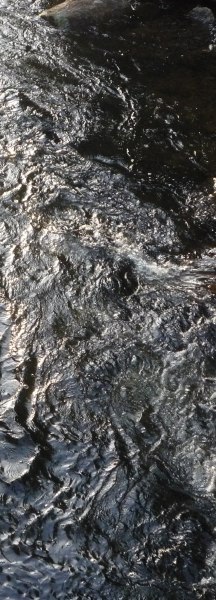Courses¶

Cornell University (USA)¶
PLSCS/NTRES 6200: Spatial Modelling and Analysis¶
Intended for early-stage MSc and PhD students, and final semester undergraduates, who are using some kind of spatial or spatio-temporal analysis in their thesis projects. I have taught this each Spring semester (in fact mostly winter weather) since 2012 until 2024. It will not be offered in 2025 because a new Professor of “Geospatial Science for Sustainable Land Processes and Management” (Prof. Yun YANG) has been hired, and does not need to teach in the first year at Cornell. Policy is not to continue a course with an Adjunct Professor (me) if there is a regular faculty who are supposed to cover the course. So with all its resources and despite always-excellent reviews, and a key place in the curriculum, the Spring 2025 students are out of luck. The course may re-appear in 2026, offered by Prof. Yang, who would undoubtably revise it according to her ideas. I might be asked to give a guest lecture but the current format will not be revived.
Theory and practice of applying geo-spatial data for resource inventory and analysis, biophysical process modeling, and regional studies. Emphasizes use and evaluation of spatial analytical methods applied to agronomic and environmental systems and processes.
2023 version: Laboratory section was used to process, analyze, and visualize geo-spatial data of interest to the student, ending in a student project linked to the student’s on-going or proposed thesis/exit project research.
For 2024 the course was cut down to a set of four Case Studies: (1) familiarity with the R “ecology”; review of basic statistical analysis; (2) Mapping regional climate by interpolation from point observations; (3) Central NY State Leukemia: areal spatial data analysis (ASDA); (4) Trees in Michigan, Wildfires in Spain: point-pattern analysis.
Lecture slides used in the 2023 or 2024 courses (PDF)
Spatial analysis with the R Project for Statistical Computing
Conceptual basis of geostatistics
A universal model of spatial variation; detecting and modelling spatial autocorrelation; variogram models; spatial prediction; Ordinary Kriging; Universal Kriging; Kriging with External Drift
Trend surfaces fitting by Ordinary and Generalized Least Squares and Generalized Additive Models
Regression Kriging (RK); Kriging with an External Drift (KED)
Remote sensing applied to agronomic and environmental systems
Principal Components Analysis with application to remote sensing image analysis
Sampling for natural resources and environmental modelling and monitoring
-
Modifiable unit area problem, the “ecological” fallacy, local spatial correlation (Moran’s I etc.), GeoDa, Spatial Autoregressive (SAR) models
Data-driven methods for predictive modelling
Modelling cultures; Classification and Regression Trees (CART); Random Forests (RF); Cubist; model tuning with
caret
Supplemental lecture slides (PDF)
Instrumental variables in linear regression
Some details not covered in “Areal Data Spatial Analysis” (see above)
Introduction to Geographic Information Systems (GIS)
Includes a brief introduction to QGIS, not updated since 2019
Exercises
These use techniques covered in Tutorials: spatial analysis
-
Datasets used in this exercise(RData, CSV; compressed)
SCAS 494: Land Suitability Evaluation¶
Land evaluation may be defined as the process of prediction of land performance when the land is used for specified purposes.
This course was last given in 1994; it is thus somewhat outdated but still can be a useful starting point. Algunos capítulos se han traducidos al Español.
南京师范大学 (Nanjing Normal University)¶
Frontiers in Geographical Information Science¶
An eight-week course for first-year students in the GIS concentration) of the School of Geography (地理科学学院), four from me on mapping and four from Dick Brus on spatial sampling. My part uses parts of the above slides, but also (from 2020) emphasizes research skills.
University of Twente (NL)¶
Faculty of Geo-Information Science and Earth Observation
Geostatistics & Open-source statistical computing¶
Distance education course, equivalent to a full-time 3-week module, last given in 2015. Here are the lecture slides (including self-assessement questions) and the set computer exercises, a bit outdated but could still be useful. Most of the exercises use the Meuse soil geochemical dataset.
Lecture slides (PDF)
Computer exericses
Exercises(set of PDF, compressed)ex0 Preparing the computing environment
ex1 Using the R Environment for Statistical Computing
ex1a Supplement to ex1: ggplot2 graphics
ex2 Visualizing spatial structure
ex3 Modelling spatial structure from point samples
ex4 Predicting from point samples (Part 1): Ordinary Kriging
ex4a Normal-score transformation
ex5 Predicting from point samples (Part 2): Kriging weights, Block kriging, Universal Kriging
ex5a Predicting from point samples (Part 3): Using secondary information
ex6 Assessing the quality of spatial predictions; Geostatistical simulation
ex7 Geostatistical risk mapping
ex8 Spatial sampling
ex8a Spatial sampling: simulated spatial annealing
ex9 R and GIS
R code for exercises(compressed)Datasets for exercises(compressed)Jura heavy metals, Cameroon soil properties, Sandford transect,Kansas aquifer
Preparation for MSc research¶
This material is from a three-week module, preparing students to enter the research phase of their MSc. These are from the last time I presented the course (Spring 2014), they may have been updated for the current course.
Lectures(PDF, compressed)Science & research; Formulating research problems, objectives and questions; research frameworks; research methods; finding & evaluating information; citations & reference list; critical reading & abstracting; structured technical writing; technical English; ethics & professionalism in science; scientific inference; statistical inference for research; thesis quality;
Text(PDF, compressed)Volume 1: Concepts; Volume 2: Skills
Exercises(PDF, compressed)Literature review; Critical reading; Argumentation
Universidad Mayor de San Simón (Bolivia)¶
Preparación para la maestría¶
Herramientas para realizar una investigación
Enfoque a la realización de Tesis de Maestría del Centro de Levantamientos Aeroespaciales (CLAS). Material traducido y adaptado al Español por Ronald Vargas Rojas a partir del texto base en Inglés, ver arriba.
Last modified 19-August-2025